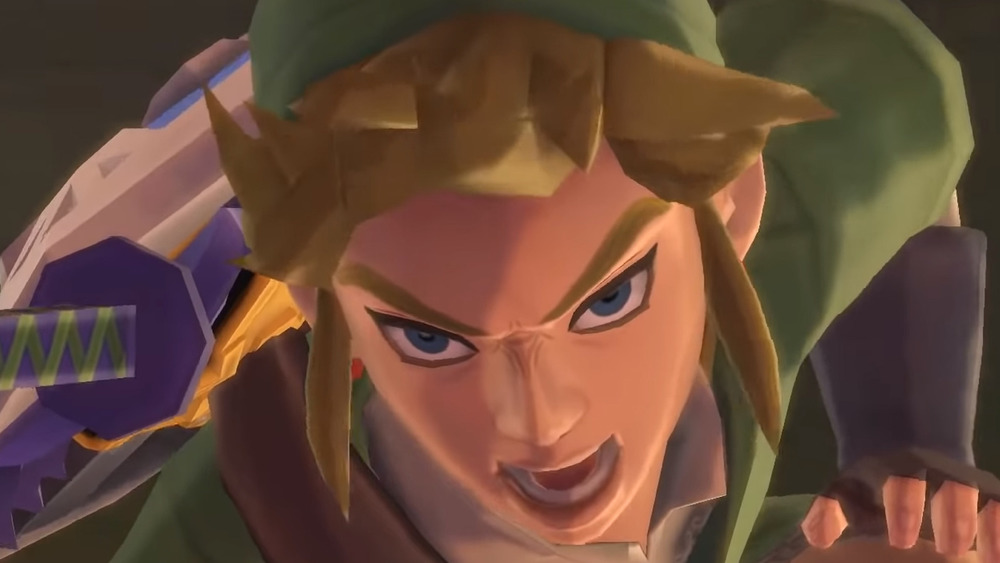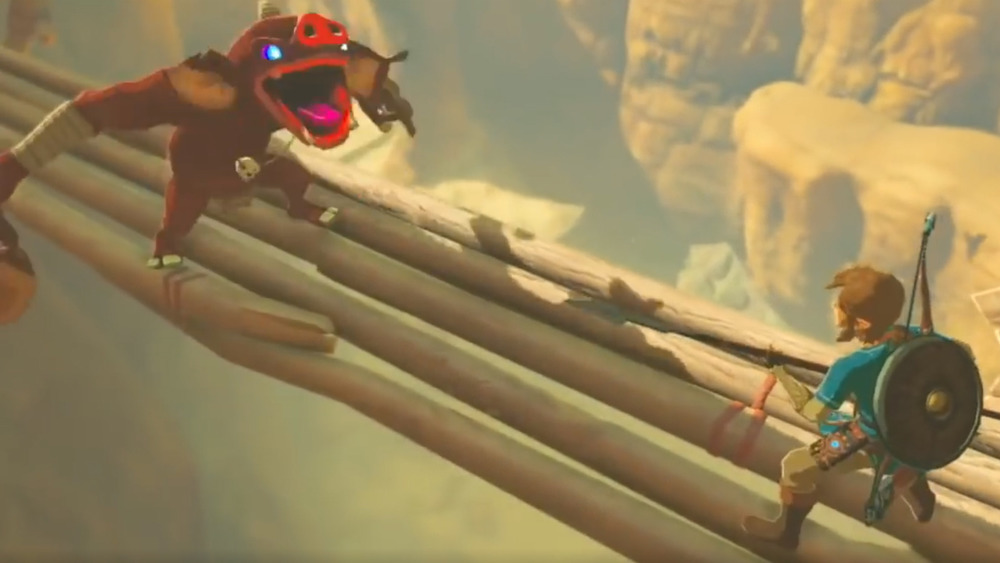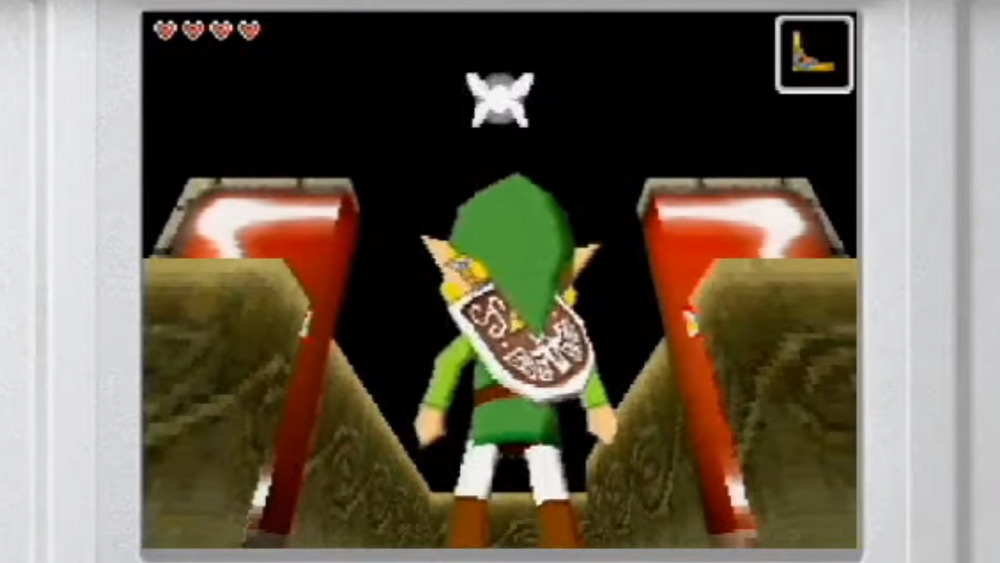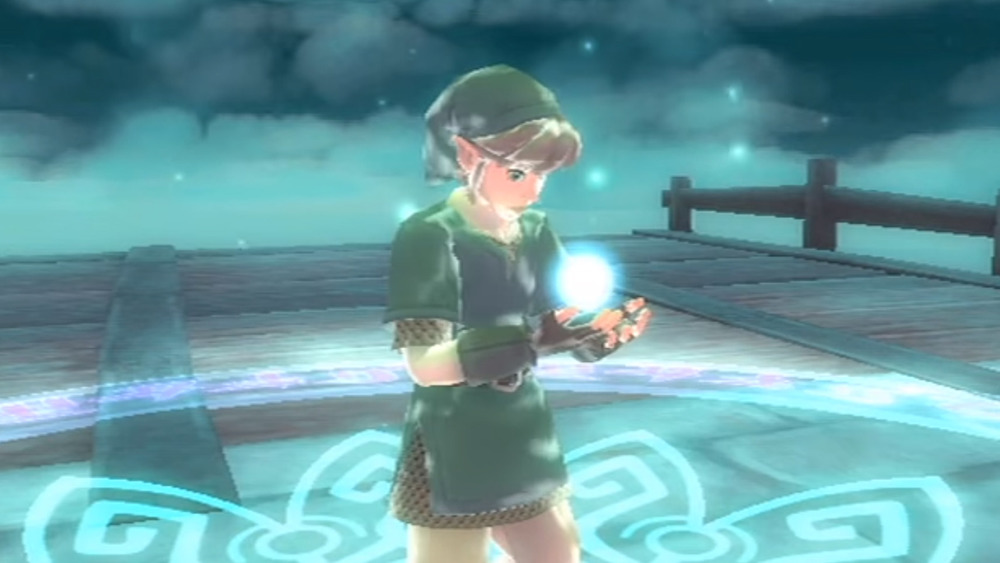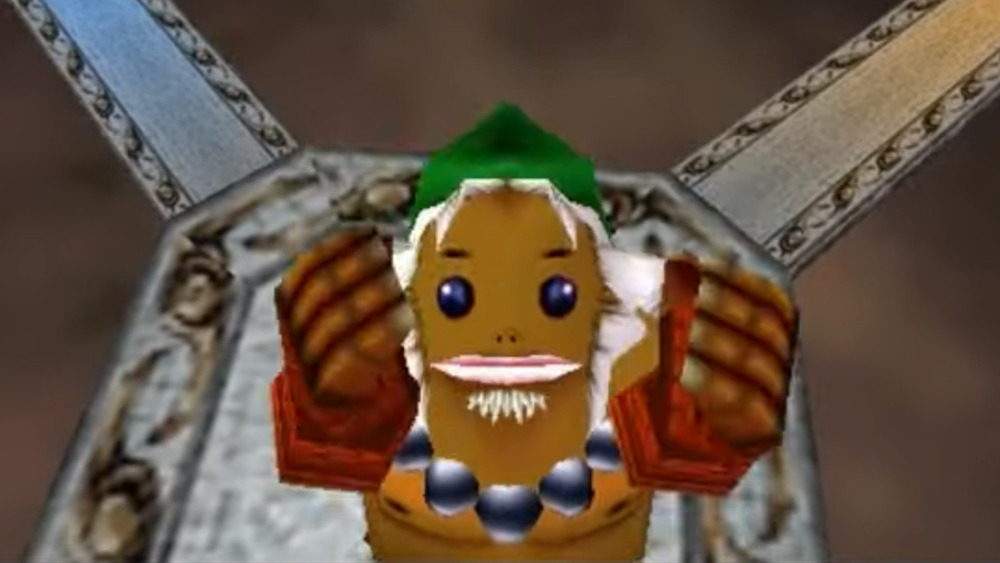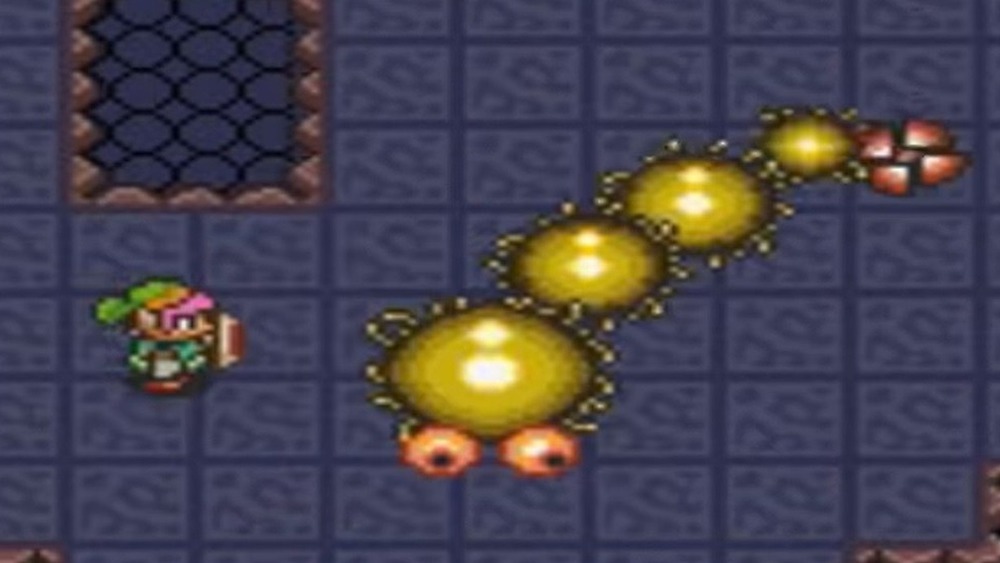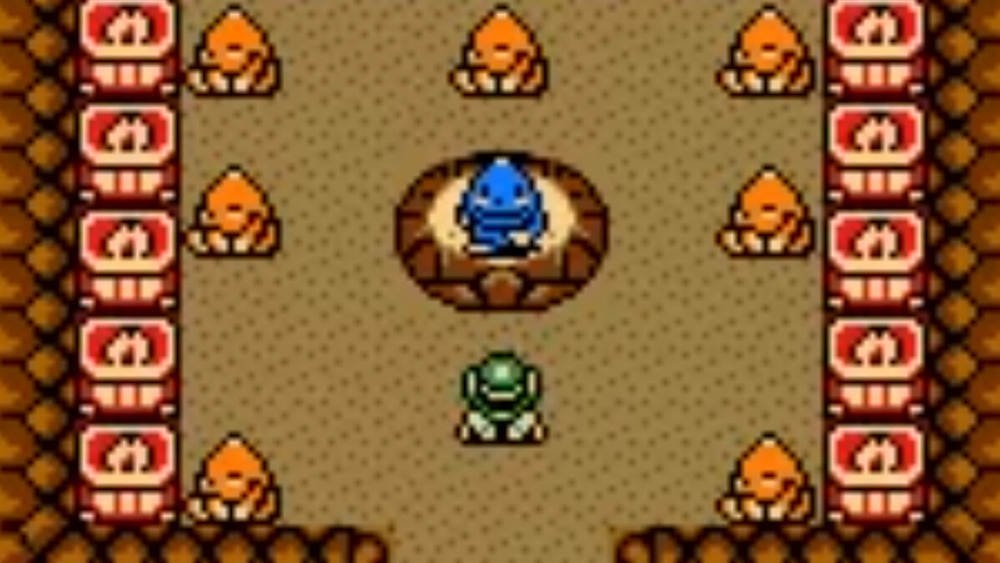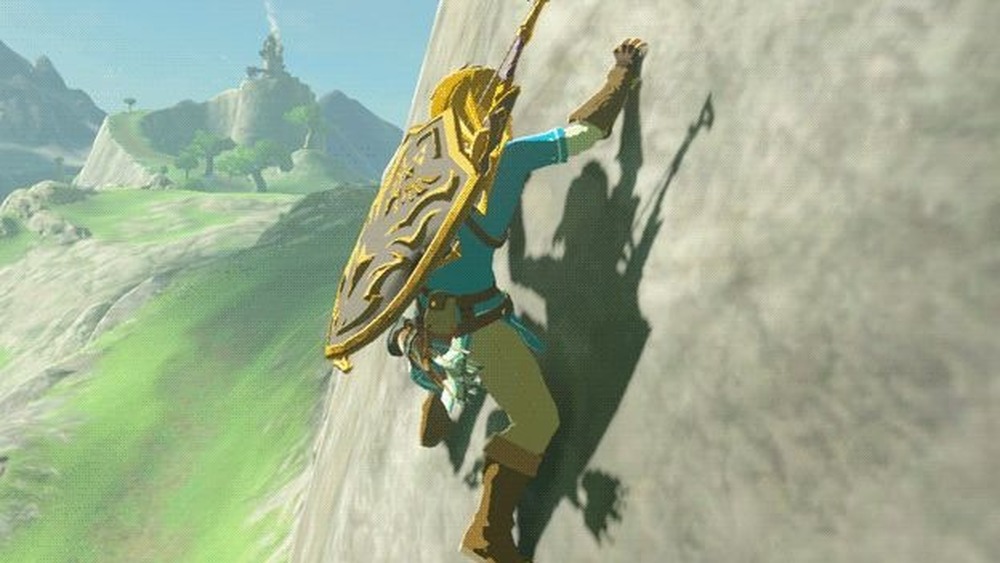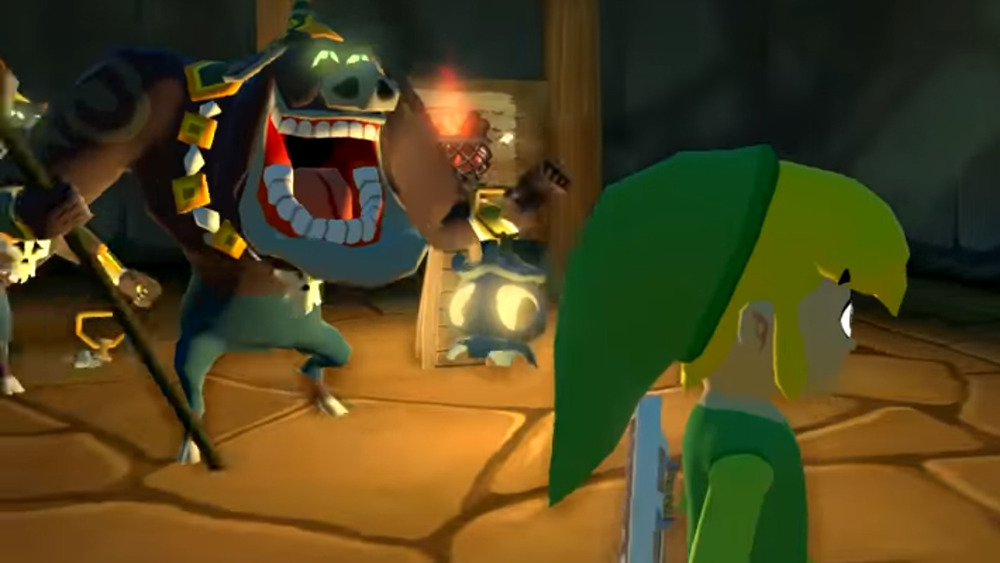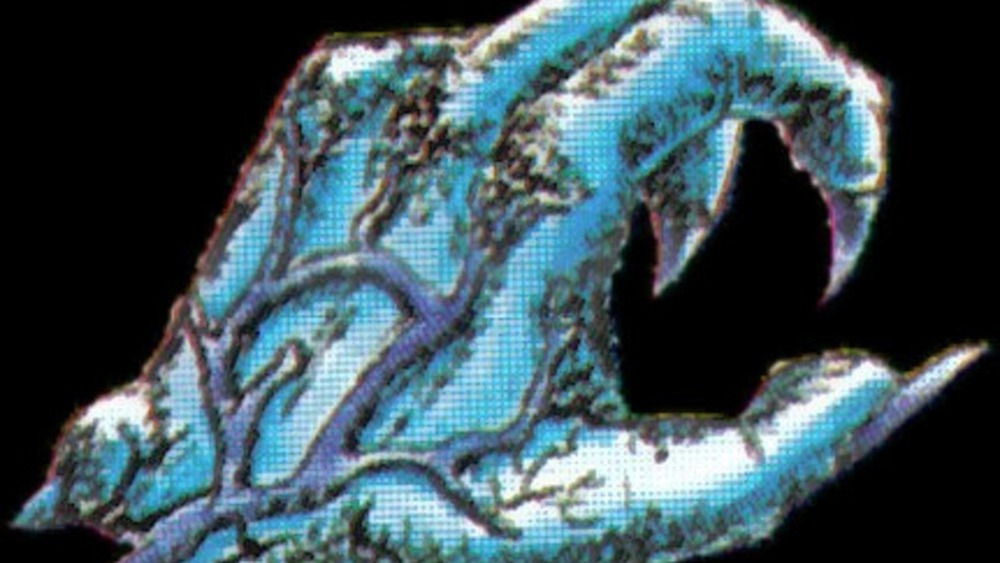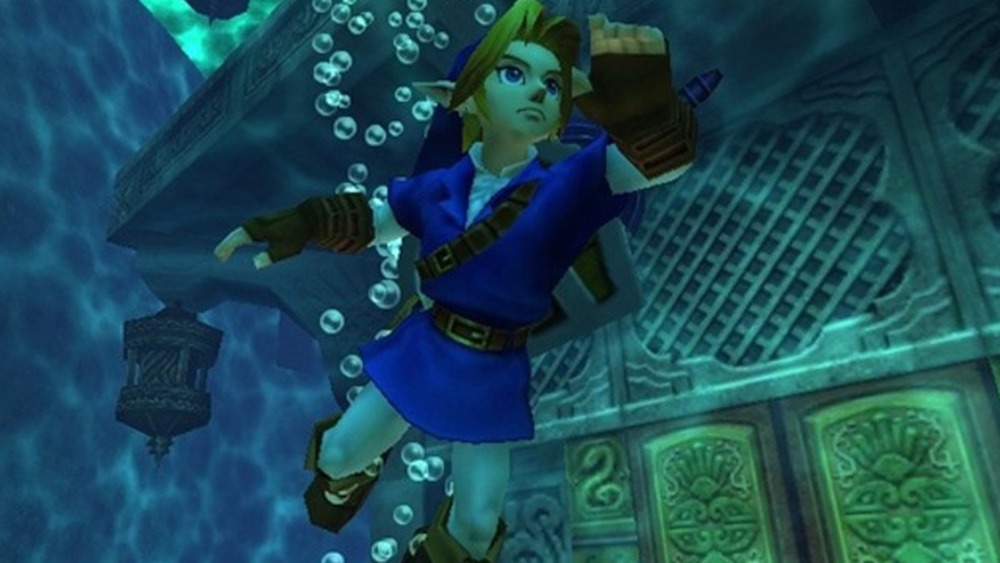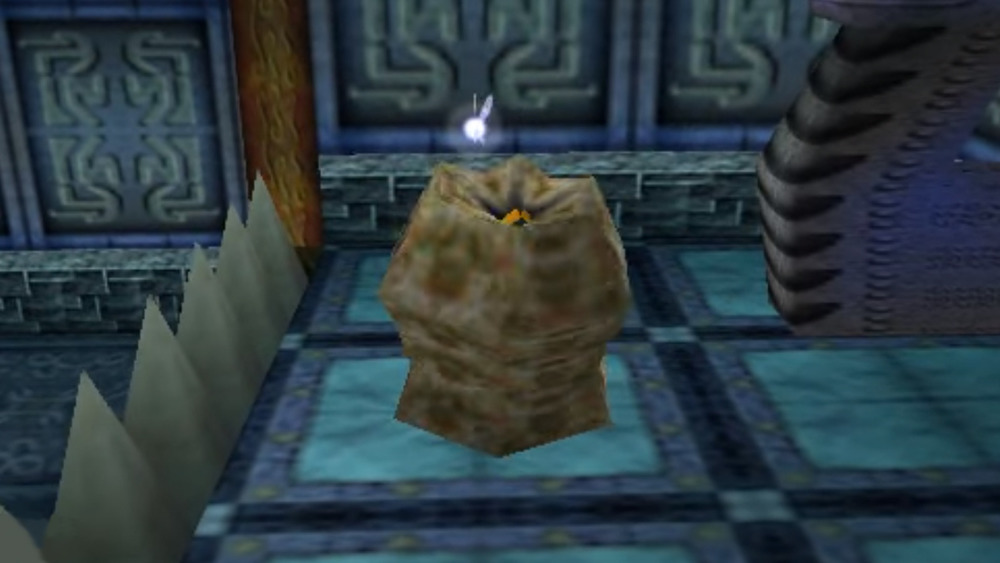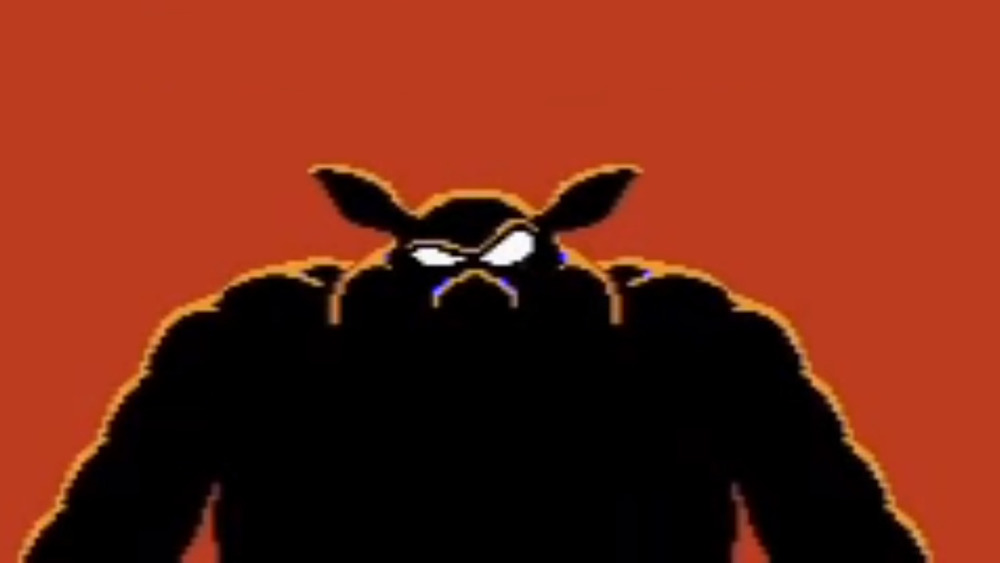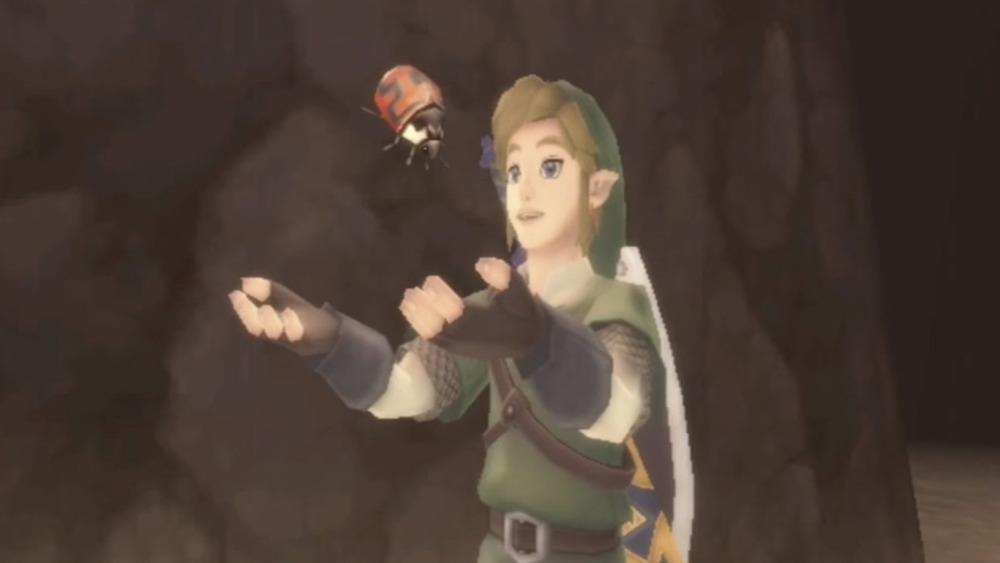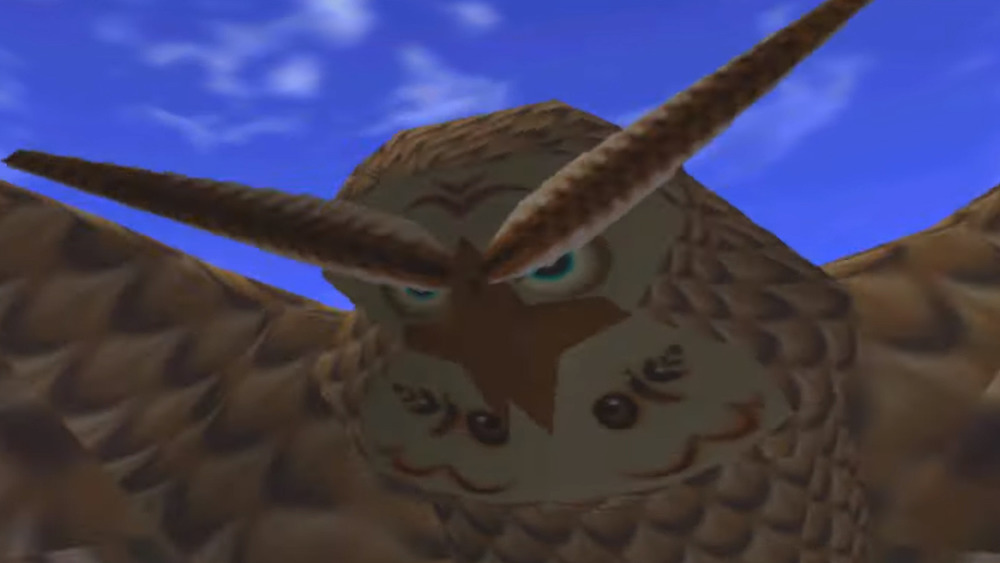The Most Infuriating Moments In Zelda Ranked
Puzzles, combat and item collecting are the three ingredients included in pretty much every game in the 35 year-old Zelda franchise. In first series entry, The Legend of Zelda, players guide protagonist Link through the earliest version of the perennial world of Hyrule. Doing so requires fighting enemies, overcoming challenges in dungeons, and collecting various items to progress into new areas of its extensive map.
That formula, established in the series' debut, has remained constant up to Breath of the Wild. Instead of collecting assorted gadgets like in the majority of past entries, Breath of the Wild's Link mainly gathers raw materials. A few new superpower-like abilities also supplant his traditional arsenal of weaponry in that entry. Nevertheless, those abilities are used to solve puzzles, discover new areas, and beat up baddies, just like in its many predecessors.
The Zelda formula's endurance is a testament to its timelessness. That said, it's the moments that iterate on or otherwise diverge from the longstanding formula that set each Zelda game apart. Every so often, however, an addition to the Zelda framework misses the mark entirely and simply becomes an annoyance to even the biggest fans. Here are the biggest offenders from throughout the many Zelda games.
Weapons breaking in Breath of the Wild
In a typical Zelda game, acquiring a new weapon is an event. Additions to Link's arsenal not only allow for new combat possibilities, they can also open up new areas for players to explore. After finding bombs for the first time, for example, Link can destroy and pass through previously obstructive boulders and rock walls. In Breath of the Wild, however, exploration is gated merely behind a few abilities that are granted to Link in an introductory zone, after which the majority of its world opens up.
Most new combat items following that portion of the game, then, are weapons and shields. These are plentiful throughout Breath of the Wild's Hyrule, including way more weapon and shield types than in previous games. To counterbalance their abundance, however, weapons and shields can break, which is a Zelda first. Given that some weapons can only be obtained once, breaking those will remove them from the game entirely.
The feature remains controversial. Some players are okay with weapons breaking, or are okay with durability being a feature in subsequent games, as long as the mechanic is given a few tweaks. For another contingent of players, however, weapon durability (or lack thereof) amounts to a game-ruining feature.
The symbol transfer puzzle in Phantom Hourglass
The Legend of Zelda: The Phantom Hourglass is the first of two Zelda games released for the Nintendo DS. While much of the game resembles the many 2D Zelda adventures before it, certain moments make use of features unique to the DS. To play a pan flute, for example, players have to physically blow air into the microphone located below the system's lower screen.
Another such moment occurs during a puzzle that requires players to close and reopen their physical Nintendo DS system. Rather than explaining outright that this is necessary, the game merely provides a hint: "press the sacred crest against the sea chart to transfer it." While said crest is located on the top screen and the sea chart on the bottom screen, at no other point does the game make you manipulate the real-world DS system. The solution, then, hinges upon lateral thinking, rather than traditional puzzle-solving.
Furthermore, when the game is played on a 2DS, which physically can't be closed, players have to toggle its "sleep" mode instead. The included hint makes no sense, then, for players on the 2DS, and the puzzle becomes even more obtuse.
The Silent Realms in Skyward Sword
Progression in The Legend of Zelda: Skyward Sword is often contingent upon revisiting old areas that have been changed or recontextualized. In one case, a forest visited by Link much earlier in the game becomes flooded. Link must then swim through the forest underwater, whereas in the past he traversed the area on foot.
Skyward Sword's Silent Realm contains recurring puzzles that similarly recontextualize areas Link has explored prior. Four Silent Realms must be completed in total. In them, Link is rendered weaponless and without his abilities. To complete each Silent Realm visit, Link must collect 15 of an item called a Sacred Tear. Trying to prevent him from doing so are numerous "Guardians," which are bizarre soldiers of sorts.
A few different actions can draw the attention of the Guardians, such as entering into the sightline of an enemy called a "Watcher" or waiting more than 90 seconds between collecting Sacred Tears. One hit from a Guardian, which can't be blocked given Link's lack of items and abilities, means that he has to restart the trial from the beginning, losing all progress. Many players have found the Silent Realm segments to be tedious or otherwise stressful.
The Goron Dungeon on the moon in Majora's Mask
Leading up to the finale of Majora's Mask are four short dungeons, each of which are only completable in one of the four forms Link takes throughout the game. In Majora's Mask, Link can transform into a Deku, a Goron, and a Zora by using their specific masks, obtained simply by progressing through the story. Thus, its final mini-dungeons are gauntlets of sorts for each of those transformations.
In the Goron Dungeon, players are required to almost entirely rely on the Goron form's ability to roll in a ball shape. Gaining momentum by rolling in ball form allows Goron Link to move considerably faster than on foot. Navigating the dungeon requires making both sharp turns and navigating narrow paths at the high velocity attainable only as a rolling Goron. Falling off by missing a turn or veering too far to one side means that the section has to be restarted entirely.
Because completing the dungeon requires precision while using an ability that renders Link significantly harder to control, a number of players have reported finding the section to be one of the most frustrating stretches of the game.
Moldorm in A Link to the Past
The average Zelda boss is beatable by learning and exploiting a particular weakness. A giant wormlike creature named Moldorm is the boss at the end of the of the third dungeon in The Legend of Zelda: A Link to the Past. Its weakness, unlike those of other series bosses that require careful observation to discern, isn't difficult to figure out. Moldorm's weak point is simply on the tip of its tail, in plain sight. Hitting its weak point will cause Moldorm to wriggle at increasingly high speeds until it's defeated upon the sixth hit.
While Moldorm may not be intellectually challenging, the fight can be mechanically difficult due to the arena in which Link fights Moldorm, which includes a hole at its center and a pit surrounding its circumference. Falling off of an edge or into the hole will place Link in a room below that of the boss fight, requiring Link to climb back up to Moldorm's arena and start over from scratch. Some players have ranked Moldorm as not just the most annoying boss fight in a Zelda game, but the most frustrating in Nintendo's entire catalog.
Goron dancing in Oracle of Ages
Music has factored into Zelda games ever since a flute was included as a collectible item in Zelda 2. Whereas that flute is usable with a single button press, subsequent Zelda games would require the player to input precise melodies or rhythms in musical sequences. Ocarina of Time's titular instrument, for example, assigns different notes to each of the N64 controller's face buttons. Songs can be played by inputting a series of notes, just as on real-life instruments.
In The Legend of Zelda: Oracle of Ages for the Game Boy Color, a minigame in which players must dance with a group of Gorons requires rhythmic precision, rather than melodic, as well as a strong short-term memory. When playing this minigame, each of the Game Boy's face buttons trigger a different dance move. Players must remember and input a predetermined series of moves in the style of memorization games like Bop-It or Simon Says, but to a precise rhythm.
Both inputting the wrong dance move or performing a move off-rhythm will result in a fail. Players have described the precise timing required by the minigame (which is necessary to progress through the game's story) as sometimes infuriatingly difficult.
Climbing in the rain in Breath of the Wild
Exploration is, even more so than in past series entries, central to Breath of the Wild. Whereas the lion's share of Zelda games must be completed in a linear fashion, players can explore most of Breath of the Wild's game world immediately following its introductory segment. Scattered throughout that game world are countless side objectives, like shrines and collectible Korok seeds, to find in central locations and extremities alike.
Climbing, therefore, is an important mechanic in Breath of the Wild due to its chief utility among Link's arsenal while exploring. Most natural surfaces can be climbed granted that Link has enough stamina. However, rain can trigger at random in most locations, effectively removing Link's ability to climb. Since rain makes surfaces slick, Link cannot climb (without a precise exploit, at least) during rainy weather. Thus, the onset of rain can cause players to have to either wait for the weather to pass or come up with an alternate route on the fly that doesn't involve climbing. Given that rain appears entirely at random, a number of players have criticized its inclusion as particularly aggravating.
Visiting Forsaken Fortress for the first time in The Wind Waker
The Wind Waker's Forsaken Fortress functions as both a prison and a lair for perennial series villain Gannondorf. Players have to complete the Forsaken Fortress twice over the course of playing through The Wind Waker's story. Both times Link visits the area, it's to save his sister Aryll, whose imprisonment is something of an inciting incident for his hero's journey.
The first time Link attempts to infiltrate the Forsaken Fortress is early in the game, and Link loses his newly-obtained sword upon his arrival. Progression through the dungeon, then, requires players to rely on stealth given Link's lack of means to take down enemies. The game's genre thus changes somewhat for the portion Link remains swordless. Enemies will not attack Link in this segment. Instead, they'll throw Link in a jail cell if they spot him, encouraging players to mimic the stealth of Metal Gear Solid and other espionage titles.
This sequence has historically frustrated players, both due to the game's imprecise stealth mechanics and its status as a significant change-up from the Zelda formula. Ultimately, it requires an entirely different skillset from the rest of The Wind Waker.
Being grabbed by a Wallmaster
Unlike many of the single-appearance nuisances on this list, Wallmasters are a recurring enemy present in the majority of Zelda games. In each of their appearances, Wallmasters are essentially giant, sentient, disembodied hands. As might be expected given their form, Wallmasters will attempt to grab hold of Link. Wallmasters also exhibit a unique behavior among Zelda enemies, existing offscreen until they drop down from above. The sudden appearance of a looming shadow is a telltale sign that a Wallmaster is about to descend.
When they grab Link, Wallmasters briefly take control away from the player and ultimately place him back at the beginning of a dungeon or a certain room. While this can be avoided with diligence, getting grabbed after a simple slip-up can mean a lot of backtracking. In a Reddit thread asking players which they find to be the most annoying enemy in the Zelda franchise, the most popular comment, with 163 upvotes, argues that it's the Wallmaster. The commenter cites how frustrating it is to have to restart a dungeon when caught off guard by one as their primary reason.
Putting on and taking off the Iron Boots in Ocarina of Time
Once Link acquires the Iron Boots in Ocarina of Time, he can use equip them to sink to the bottom of any body of water. In conjunction with the Zora Tunic, which allows Link to breathe underwater, players can then traverse aquatic areas as easily as those on dry land. That said, the Iron Boots cannot be assigned to a C button like other useful items (a problem later rectified in the game's 3DS remake). Instead, using them requires pausing the game and navigating to a specific subscreen with Link's swords, shields and clothing, where they can then be equipped or removed.
The Iron Boots becomes especially important in Ocarina of Time's Water Temple. Traversing the Water Temple requires raising and lowering a persistent water level to one of three heights, which is a significant contributor to the dungeon's notorious difficulty. Proper manipulation of its water levels can be learned. Even the most skilled speedrunner, however, will have to spend a considerable amount of time navigating in and out of the pause menu to equip and unequip the Iron Boots the many times required to beat the temple.
Losing your shield and tunic to a Like Like in Ocarina of time
Like Likes are stationary worm-like creatures that can envelope Link if he gets too close to one without attacking. They appear in a large number of Zelda games, and in many of their appearances, they will take an item from Link before spitting him back out. Those items can be re-obtained by defeating the Like Like quickly, but taking too long will ensure that those items are lost forever. While this can be annoying no matter the circumstance, the Like Likes of Ocarina of Time are easily the most frustrating version of the enemy in the Zelda franchise.
That's due to the fact that Ocarina of Time's Like Likes eat both Link's shield and tunic, should he be wearing either of the game's nonstandard outfits. If a player loses a tunic to a Like Like, it can ultimately be re-obtained. That said, doing so requires visiting the correct shop and shelling out 200 rupees, potentially requiring both farming money and backtracking to the relevant shop's location. Since both the red and blue tunics are needed to explore certain areas of the game, losing one at an inopportune moment can seriously railroad a player's forward trajectory.
Getting a game over in Zelda 2
Although Zelda 2: The Adventure of Link was merely the second Zelda game ever made, many fans consider it one of the hardest entries in the series to this day. Its difficulty is due to a confluence of factors. One of those is that common enemies can sometimes pose a threat comparable to that of its bosses. Dying, therefore, is a somewhat regular occurrence.
Unlike most other Zelda games, Zelda 2 includes a life total on top of Link's health bar. Challenging sections can be retried, then, granted Link has an extra life. Dying with no lives remaining, however, sets players back in a multitude of ways.
First, a game over restarts Link at a central map location, potentially far away from the players' next objective. Furthermore, Link loses both experience and stat points. The time investment required to make up for an untimely death, then, requires both navigating back to wherever the player's prior location may have been, as well as grinding to make up for lost experience points. The significant time sink resultant from a game over makes dying in Zelda 2 one of the most frustrating experiences in Zelda history.
Notifications for collectibles in Skyward Sword
In most Zelda games, a sort of notification window appears the first time players collect a new item. While those can at times interrupt the flow of gameplay, the feature's inclusion is benign as a whole. The first time a player collects a red rupee, for example, the game will endeavor to let players know it counts for 20 rupees in value. While that information could be gathered simply by watching the amount by which Link's currency increases upon collecting one, the accompanying notification nevertheless helps drive the point home. It's ultimately a harmless feature.
This system was taken to an extreme in Skyward Sword, however. The first time in any individual play session that Link acquires a collectible item — be it a high value rupee, a treasure from an enemy, or catchable bug — a notification window appears as if the player were seeing the item for the first time. Given how quickly those recurring messages can become repetitive, some players have questioned how the feature ever made it into the game in the first place. It's way more intrusive than if the notifications only appeared once per save file.
Letting the owl know you heard everything he said in Ocarina of Time
The number one most infuriating moment from the 35 year history of the Zelda franchise is, without a doubt, attempting to let Ocarina of Time's owl know that Link has heard the entirety of one of his lengthy speeches. The owl, named Kaepora Gaebora, appears periodically throughout Ocarina of Time to regale Link with long-winded explanations of Hyrule's lore or similar sorts of jargon-filled speeches. Functionally, these are meant to give players an idea of what to do next, or simply provide helpful context for an upcoming area.
Once the owl's long messages are over, he prompts Link to decide whether or not he would like to hear everything he has just finished saying all over again. In those instances, it's easy to select an unintended option. Sometimes he asks, "Did you get all that?" to which the answer would be "Yes." Sometimes, the owl asks, "Do you want to hear what I said again?" to which the answer would probably be "No."
Selecting the wrong option becomes even more dangerous, as players are likely to want to button mash through Kaepora Gaebora's lectures, making a frustrating retread all but inevitable.

